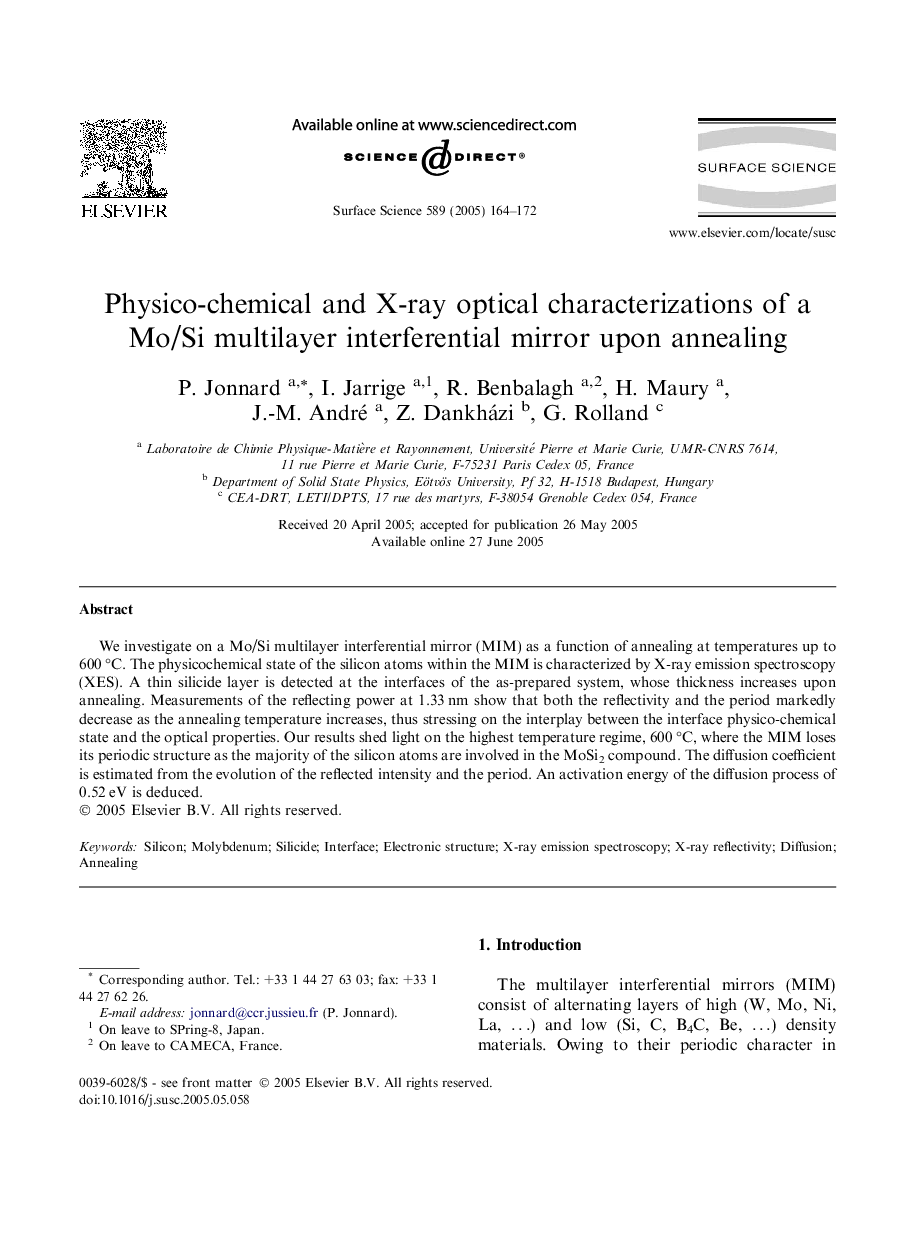| Article ID | Journal | Published Year | Pages | File Type |
|---|---|---|---|---|
| 9595214 | Surface Science | 2005 | 9 Pages |
Abstract
We investigate on a Mo/Si multilayer interferential mirror (MIM) as a function of annealing at temperatures up to 600 °C. The physicochemical state of the silicon atoms within the MIM is characterized by X-ray emission spectroscopy (XES). A thin silicide layer is detected at the interfaces of the as-prepared system, whose thickness increases upon annealing. Measurements of the reflecting power at 1.33 nm show that both the reflectivity and the period markedly decrease as the annealing temperature increases, thus stressing on the interplay between the interface physico-chemical state and the optical properties. Our results shed light on the highest temperature regime, 600 °C, where the MIM loses its periodic structure as the majority of the silicon atoms are involved in the MoSi2 compound. The diffusion coefficient is estimated from the evolution of the reflected intensity and the period. An activation energy of the diffusion process of 0.52 eV is deduced.
Keywords
Related Topics
Physical Sciences and Engineering
Chemistry
Physical and Theoretical Chemistry
Authors
P. Jonnard, I. Jarrige, R. Benbalagh, H. Maury, J.-M. André, Z. Dankházi, G. Rolland,
